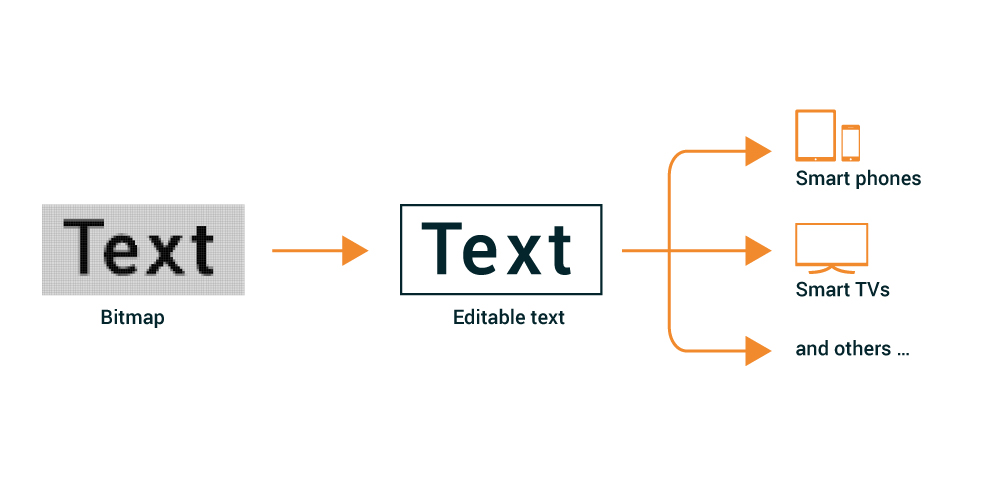
Subtitle processing – unique and technically sophisticated
There are several approaches to subtitle processing, each with its own advantages and disadvantages. The ModernTV system is unique, technically sophisticated, and differs significantly from how subtitles are processed by other competitive platforms. In this article, we will discuss all the most known and tell you more about our own trained neural networks used to advanced Optical Character Recognition (OCR).
How it works?
TV signal owners, or so-called programmers, supply us with subtitles together with the stream. But the problem is that they are not in a uniform format. Therefore it is necessary to convert them into standardized output, which each individual platform is able to process.
Almost 90% of programmers use the DVB subtitles format, others use Teletext to transmit subtitles. While Teletext is a text format that is easy to process into the final output, DVB subtitles are a bitmap format – subtitles are in the form of an image. Here you have 3 ways how to proceed:
- attach the subtitles as a bitmap to the stream
- burn the subtitles bitmap to the stream,
- use advanced OCR (Optical Character Recognition) systems to convert subtitles images to the text.
Bitmap attached subtitles
When attaching the subtitles as a bitmap you can attach more subtitle tracks but most of the end devices are not able to handle stream which consists of images together with another image layer of subtitle. This is why such a method is not much used nowadays.
Burning to the stream
Burning the subtitles bitmap to the stream makes the easiest way to provide subtitles. But disadvantages come when you want to provide more subtitle tracks or the possibility to switch subtitles off. In that case, you would need to transcode and store channels in particular quality more times. For example, when providing two subtitle tracks with a possibility to switch between and off, you would need to store 3 copies – original stream, stream with subtitles in 1st language, and stream in 2nd language. This makes it much more expensive when transcoding and storing such files.
OCR based subtitles
The best method on the market today and a feature of ModernTV solution are subtitles based on the OCR system. For OCR, we use our own system and our own dictionaries, which we trained using neural networks. The uniqueness of our solution lies in the fact that it is extremely fast, so it takes place in real-time when transcoding image data.

The result of the subtitle conversion is the universal WebVTT format, which can be used on all platforms starting with smart TVs all the way to the web as well as mobile phones. Moreover in the final you get the subtitles in the text format you can change the subtitle font, size and color or provide more subtitle tracks within a stream.




